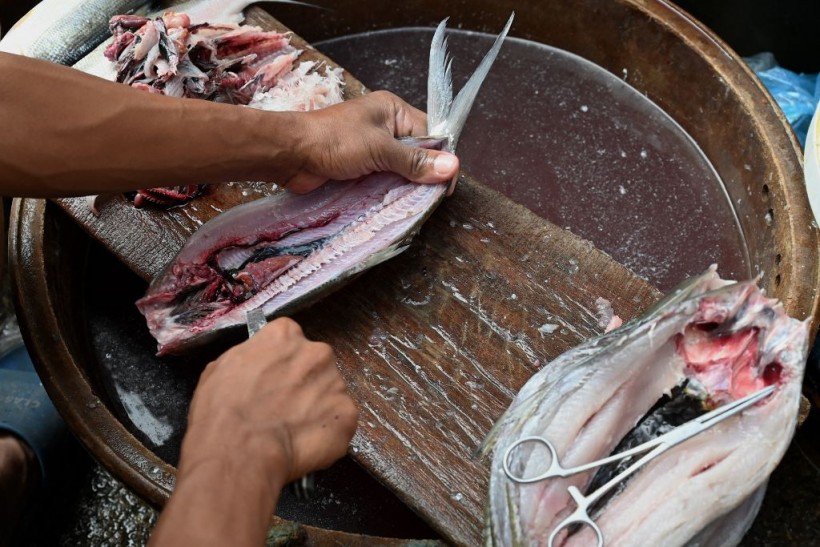In a study conducted by researchers from the Mindanao State University-Iligan Institute of Technology (MSU-IIT), a startling revelation has come to light - microplastics have infiltrated the very fish that form the cornerstone of the Filipino diet.
Inquirer.net reports that the research, funded by the Department of Science and Technology, sheds light on the presence of microplastics in the gastrointestinal tracts of adult milkfish, known locally as "bangus."

A man guts milkfish before sun-drying them in Tondo, Manila on November 18, 2022. - The Philippine government has approved the importation of 25,000 metric tons of fish to cover supply requirements for the closed fishing season months. (Photo by JAM STA ROSA / AFP)
Alarming Findings
The discovery of 97 percent of sampled milkfish contaminated with microplastics has far-reaching implications for the Philippines' environment and public health.
The study, led by researcher Kaye Similitan, extracted samples from fish cages in the Masao River, Butuan City, and Butuan Bay, Nasipit town, Agusan del Norte province.
The results are staggering, with nearly every milkfish tested showing traces of microplastics, an issue that has far-reaching consequences for the nation.
The contamination was found to be higher in Butuan City, where an average of 10 microplastic particles per fish were discovered, compared to an average of 5 in Nasipit.
The reasons behind this disparity are multifaceted, but economic activity, population density, and plastic waste mismanagement appear to play pivotal roles.
A Closer Look
Similitan attributes the elevated microplastic ingestion in Butuan City to the area's industrial and commercial activities and high population density.
As plastics accumulate in waterways, they become an irresistible part of the fish's diet, ultimately reaching our dinner tables.
The situation is exacerbated by the city's proximity to the Masao River, which registers five times higher microplastic concentrations than Butuan Bay. The neighboring Agusan River contributes to the contamination of plastic waste originating from other parts of Mindanao.
While the Department of Environment and Natural Resources (DENR) is currently conducting ongoing research on microplastic levels in various water bodies across the country, Hernando Bacosa, an environmental scientist involved in the research, tells Inquirer.net that waiting for thresholds to be reached is not an option.
He says, "We don't have to wait for it (the concentration of microplastics) to reach 100 [microplastics per liter] in 10 years or after 20 years."
Read Also: Scientists Uncover Intriguing 'Mini Organ' Inside Mammalian Cells
Philippines' Most Consumed Fish
This alarming discovery comes at a time when fish constitute the most consumed animal protein in the Philippines, with an annual per capita consumption of 40 kilograms, according to the Philippine Statistics Authority.
Studies tell us that milkfish, tilapia, round scad, and golden fusilier are the top four consumed fish species in the country. As the demand for fish continues to surge, the contamination of this vital protein source with microplastics poses a grave threat to public health.
Microplastics are not only harmful to marine life but also potentially to humans. Previous research has suggested that these tiny plastic particles can cause tissue damage, oxidative stress, and changes in immune-related gene expression in fish.
In humans, exposure to microplastics may lead to oxidative stress, cytotoxicity, neurotoxicity, and disruptions to the immune system. The long-term consequences are still unclear, highlighting the need for further research and swift action.
Stay posted here at Tech Times.
Related Article: Invasive New Zealand Mud Snail Sparks Alarm as it Invades US' Lake Tahoe






